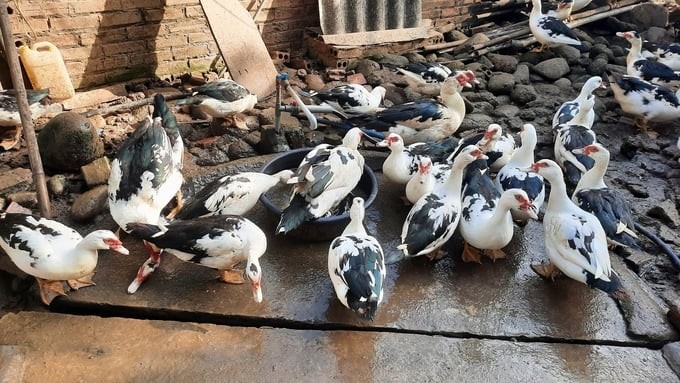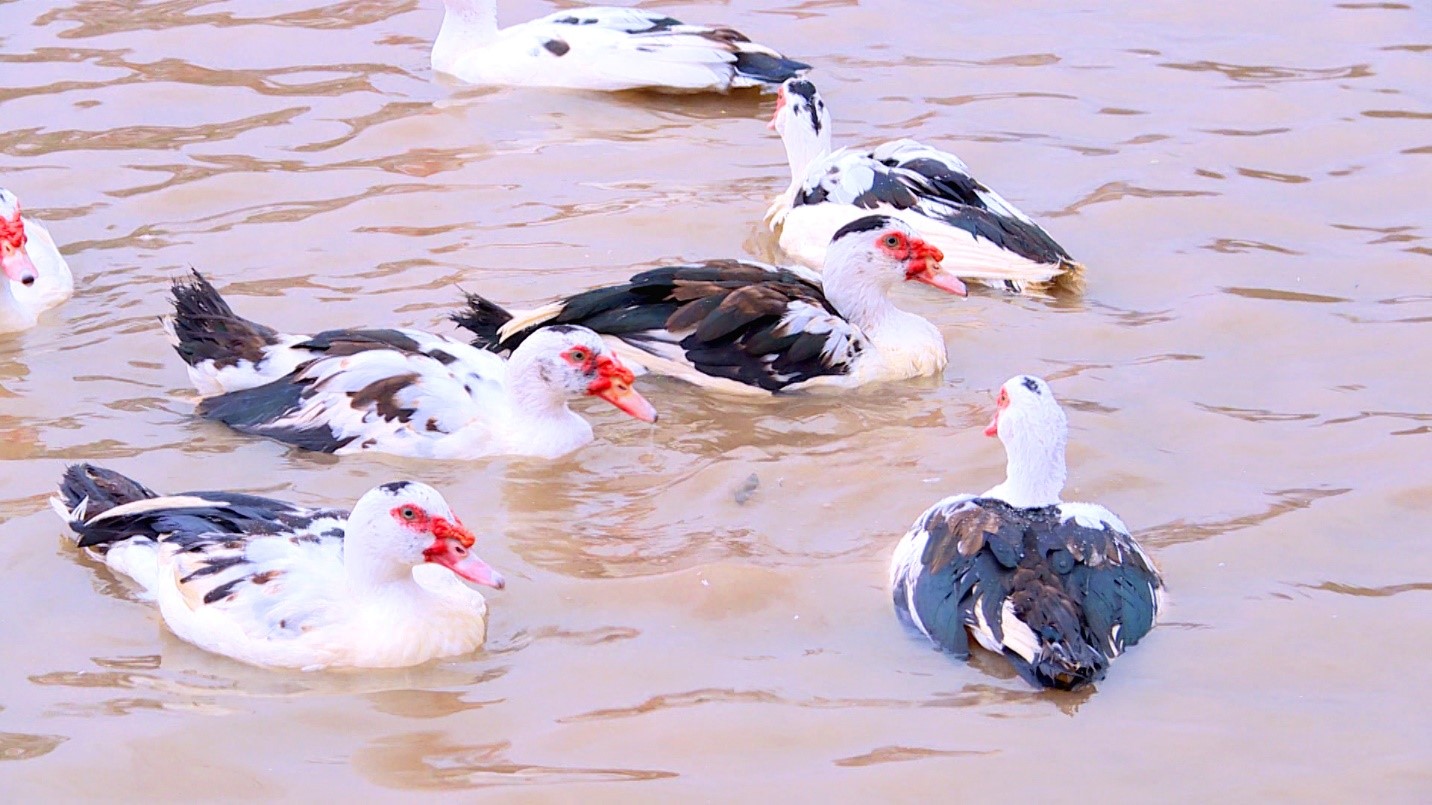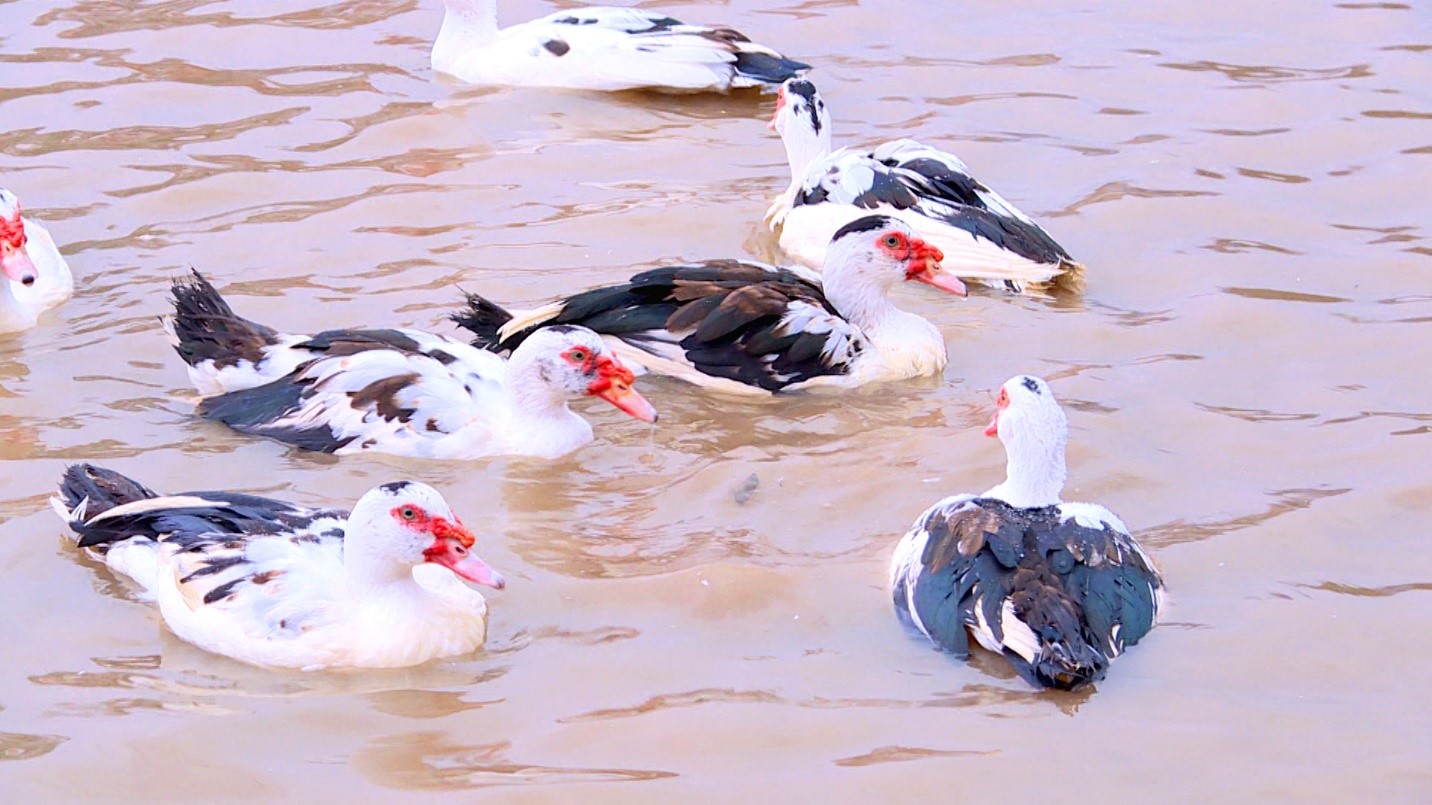Histomoniasis in geese is a dangerous parasitic disease that significantly affects their health and farming productivity.
Histomoniasis, also known as Histomoniasis, is a dangerous parasitic disease caused by Histomonas meleagridis. The disease mainly occurs in geese, turkeys, chickens and some other poultry species, including geese farmers pay little attention to. The typical characteristic of the disease is causing serious damage to the liver and cecum, greatly affecting health, growth ability and livestock productivity. If not detected and treated promptly, the disease can lead to a high mortality rate, especially in young geese.
 Image of geese farming
Image of geese farming
1. CAUSE OF THE DISEASE
– Protozoan disease Histomonas meleagridis
– The vector of the disease is pinworm. When geese eat food or drink water containing pinworm eggs containing pathogens, when entering the body, histomonas will parasitize the liver and cecum and cause disease. The pathogens are excreted through pinworm eggs and directly through feces, creating a cycle of infection and causing disease in the flock of geese.
– And when excreted from the host body of the goose, pinworm eggs are eaten by earthworms, surviving for a long time in the environment of the livestock area, which is why the disease is very difficult to completely eliminate in livestock areas that have had the disease, the rate of recurrence for the following flocks is always very high. At the same time, raising geese with chickens is also a cause of increased blackhead disease in geese.
2. SYMPTOMS OF THE DISEASE
– Ducks often show signs of depression, poor appetite, reduced water intake. Fever, neck retraction, head tucked into wings.
– Yellow wax, black wax, or crab-like stools, fishy smell.
– Weight gain is reduced, stunted, ruffled feathers, and weak.

3. LESIONS OF THE DISEASE
– Liver: Yellow-gray necrotic spots appear, scattered or linked into large patches.
– Cecum: The cecum wall thickens, contains inflammatory fluid, or may contain cocoons, curds, bleeding, necrotic nodules may appear, even cecum perforation, causing peritonitis.
4. TREATMENT OF THE DISEASE
– Use Sulmotri ws combined with Amoxcin 100 ws or Dimoxan ws for geese to drink twice a day.
– At the same time, combine with Vita K 200 ws to stop bleeding to help geese recover quickly, and supplement with Sorbacin to detoxify the liver and kidneys to help geese recover quickly from illness.
– In addition, you need to deworm your geese to kill the vector of pinworms: use Ivermectin 10 Oral or Ivmectin 6 ws to deworm your geese according to the manufacturer’s instructions.

– Supplement Glucan c to increase resistance to help geese recover quickly.
– You need more digestive enzymes: Haspro, Zymtozic to quickly restore the digestive system and balance intestinal microflora. And one thing to note about geese is that when they are sick, they easily lose feathers, so antibiotics used for geese also need attention. And after treating the disease, you should use products that stimulate feather growth for geese.
5. PREVENTION OF THE DISEASE
– Farmers need to pay attention to ensuring Biosecurity: Strictly implement measures to clean barns and livestock equipment. Periodically disinfect barns,
– Pinworm control: Periodically deworm the flock with Albenol 100 oral. Compost to kill worm eggs.
– Keep geese separate from susceptible species such as chickens or turkeys
Histomoniasis in geese is one of the most dangerous illnesses that directly affect their health and farming productivity. Effective prevention measures, and timely treatment are key to minimizing risks and keeping the flock healthy
